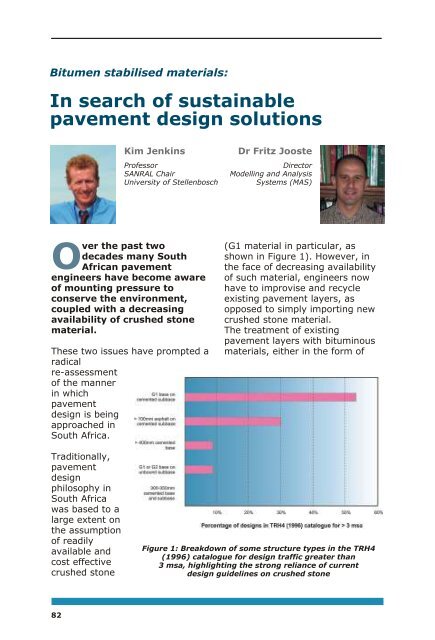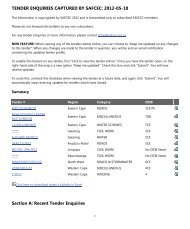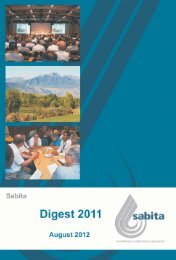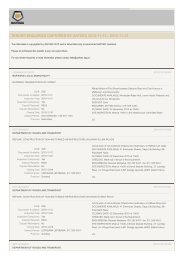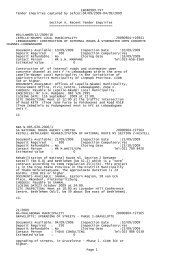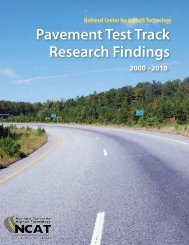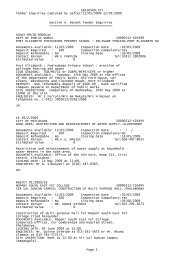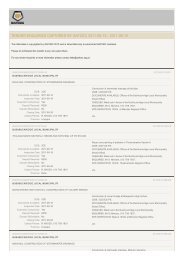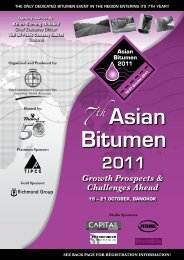DIGEST 2006 - Sabita
DIGEST 2006 - Sabita
DIGEST 2006 - Sabita
You also want an ePaper? Increase the reach of your titles
YUMPU automatically turns print PDFs into web optimized ePapers that Google loves.
Bitumen stabilised materials:<br />
In search of sustainable<br />
pavement design solutions<br />
Kim Jenkins<br />
Professor<br />
SANRAL Chair<br />
University of Stellenbosch<br />
Dr Fritz Jooste<br />
Director<br />
Modelling and Analysis<br />
Systems (MAS)<br />
Over the past two<br />
decades many South<br />
African pavement<br />
engineers have become aware<br />
of mounting pressure to<br />
conserve the environment,<br />
coupled with a decreasing<br />
availability of crushed stone<br />
material.<br />
These two issues have prompted a<br />
radical<br />
re-assessment<br />
of the manner<br />
in which<br />
pavement<br />
design is being<br />
approached in<br />
South Africa.<br />
(G1 material in particular, as<br />
shown in Figure 1). However, in<br />
the face of decreasing availability<br />
of such material, engineers now<br />
have to improvise and recycle<br />
existing pavement layers, as<br />
opposed to simply importing new<br />
crushed stone material.<br />
The treatment of existing<br />
pavement layers with bituminous<br />
materials, either in the form of<br />
Traditionally,<br />
pavement<br />
design<br />
philosophy in<br />
South Africa<br />
was based to a<br />
large extent on<br />
the assumption<br />
of readily<br />
available and<br />
cost effective<br />
crushed stone<br />
Figure 1: Breakdown of some structure types in the TRH4<br />
(1996) catalogue for design traffic greater than<br />
3 msa, highlighting the strong reliance of current<br />
design guidelines on crushed stone<br />
82


